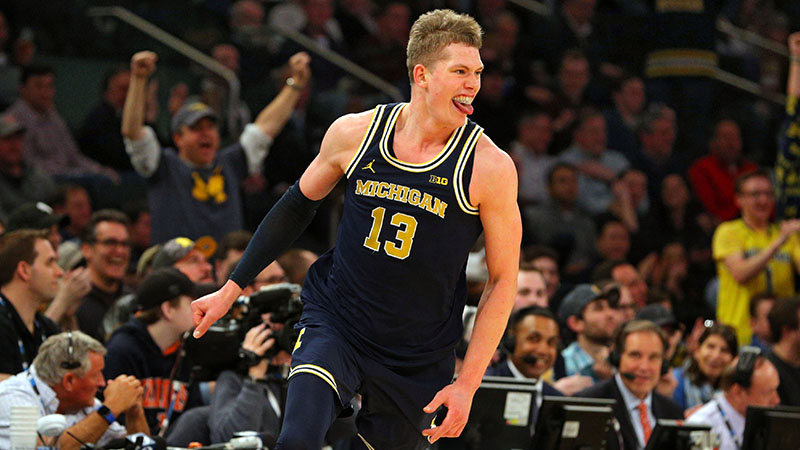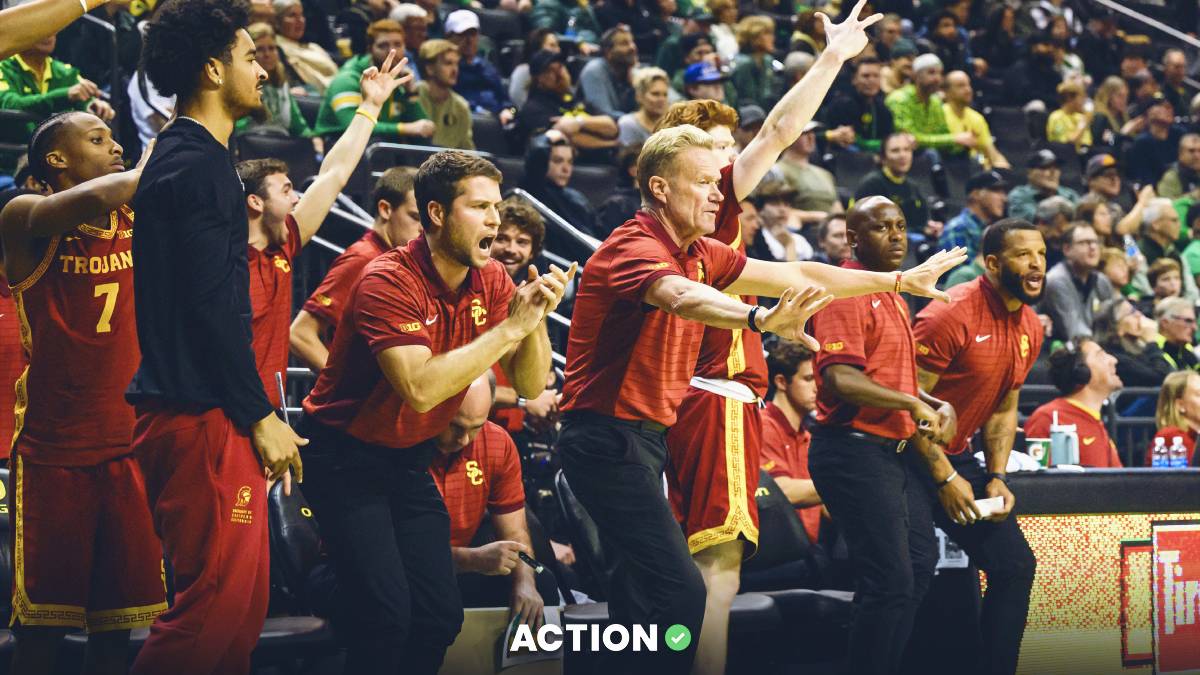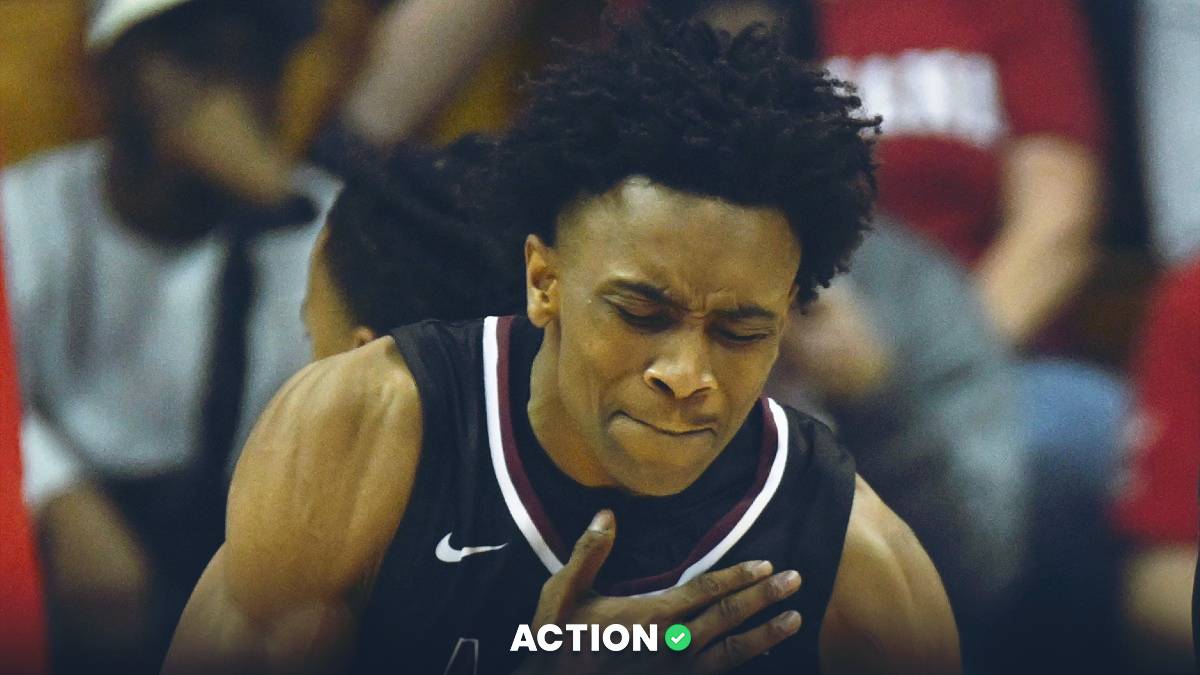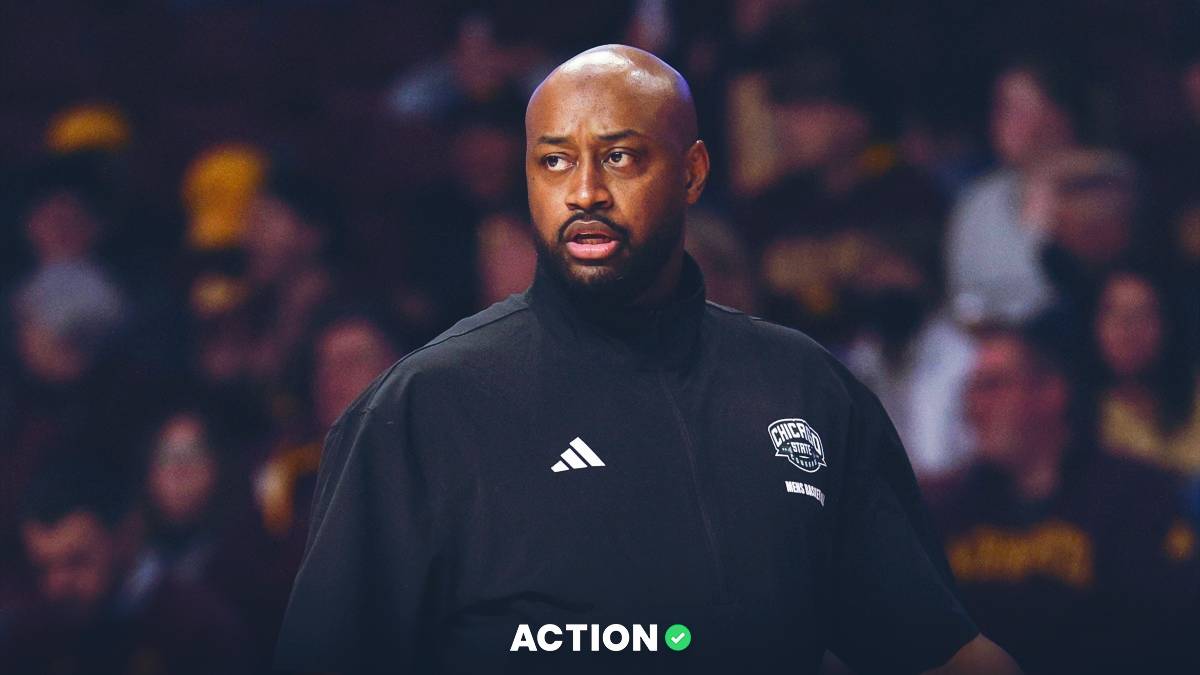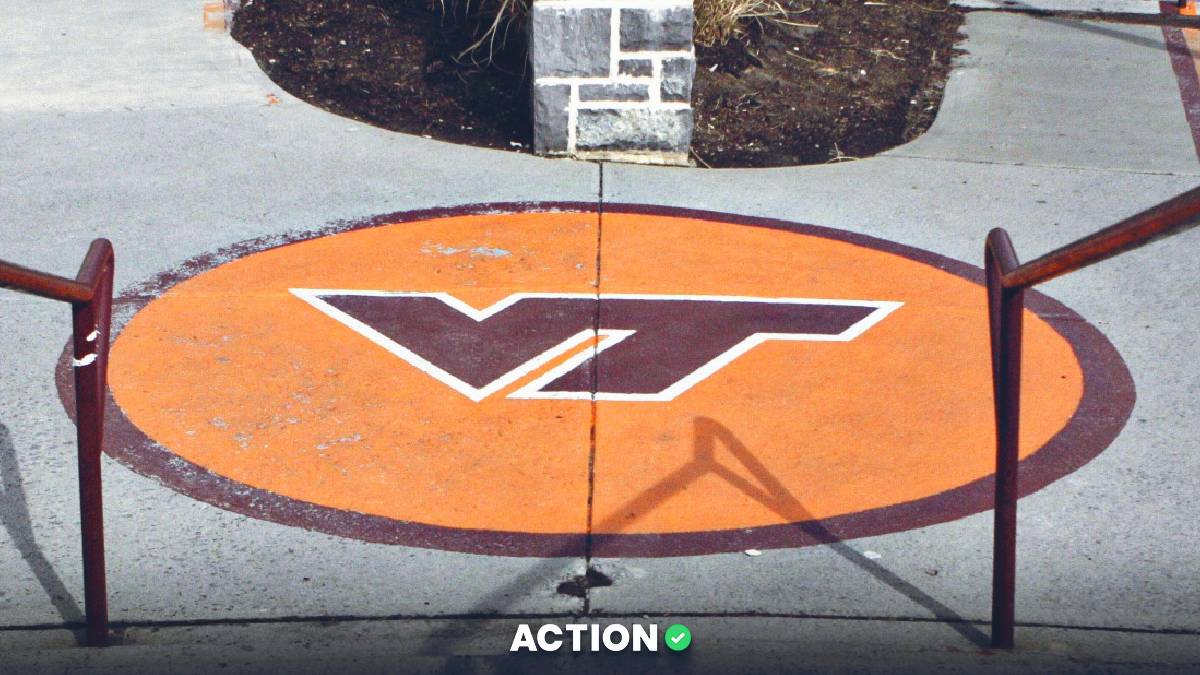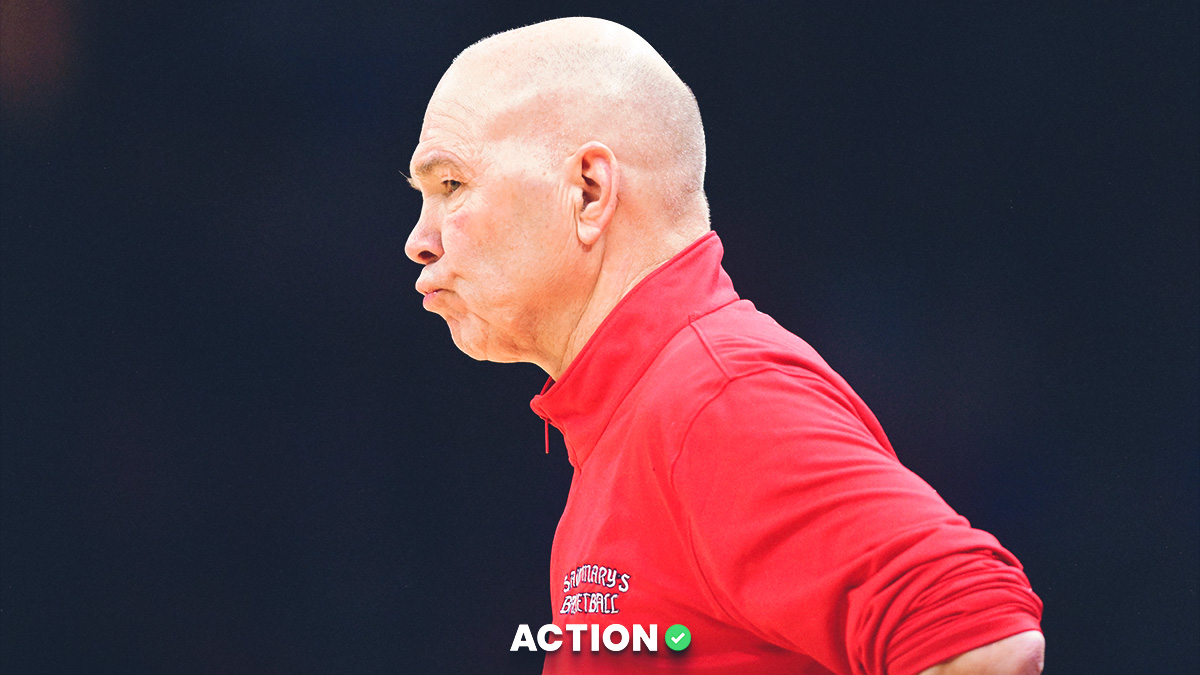There is certainly not a perfect team in the Big Dance this year, and the field seems especially wide open with Virginia, Cincinnati, Michigan State and North Carolina all losing in the first weekend. The Spartans were a rare team with a top-10 offense and defense, and they still lost to one of the worst teams in the tournament in Syracuse. Things are getting mad.
A couple weeks ago, I wrote that, because the betting market is so in line with Ken Pomeroy's Adjusted Efficiency Margin — which is simply Adjusted Offensive Efficiency minus Adjusted Defensive Efficiency — big weaknesses or advantages/disadvantages that aren't accounted for in a basic points-per-possession metric could be undervalued by the betting market.
So, in that vein, let's walk through each team's biggest weaknesses and which teams are set up to exploit them. We'll start with the worst team (sorry, Syracuse) and move our way up to the best (Villanova).
Syracuse
Biggest weakness: Shooting
West Virginia is not a good shooting team, ranking 183rd with a poor 50.6% effective field goal rate. The Mountaineers are the second-worst shooting team left in the tournament, and they're still miles better than Syracuse, which ranks 325th out of 351 teams with a 46.8% effective field goal rate. It gets worse: The Orange rank 289th in percentage of shots from the 3-point line, and they're 329th in 3-point percentage. Their offense is entirely reliant on penetration and getting to the line, which will be nearly impossible as they get a taste of their own medicine against Duke's 2-3 zone.
Worst possible matchups: Duke, Texas A&M
Kansas State
Biggest weaknesses: Offensive and defensive rebounding
Kansas State is one of the worst rebounding teams in the nation, grabbing just 25.8% of their misses (266th) and limiting opponents to just 32.0% of their misses (307th). Forward Dean Wade is the only player on the roster to average at least five rebounds per game, and he's been out since the Big 12 tournament with an injury. Even if he plays — he's claims to be "98%" likely to suit up against Kentucky — Kansas State just doesn't have the size to combat a tall, aggressive frontcourt: Wade and Makol Mawien are the tallest rotation players at 6-foot-10 and 6-foot-9, respectively. This is not a great weakness to have, as some of the best remaining teams are especially strong this season rebounding the ball: Duke, West Virginia and Kansas State's next opponent, Kentucky, all rank in the top-10 in offensive rebound rate.
Worst possible matchups: Duke, Kentucky
Loyola Chicago
Biggest weaknesses: Size and rim protection
For as much as I just bashed Kansas State for its rebounding numbers, Loyola is actually worse on the offensive glass, grabbing just 22.2% of its misses (332nd). The difference, however, is that's by design: The Ramblers get back on defense and are excellent in limiting transition opportunities. Unlike K-State, the Ramblers are just fine on the defensive glass and box out well. They do have a similar disadvantage, however: Their tallest rotation player is just 6-foot-9, and that manifests itself with poor rim protection. The Ramblers allow opponents to make more than 60% of their buckets at the rim. They're a sound team that doesn't have a ton of huge weaknesses, and it's possible their excellent pick-and-roll D doesn't allow many shots at the rim. But a team with an athletic advantage could give them issues.
Worst possible matchups: Duke, Gonzaga, Michigan
Florida State
Biggest weaknesses: Defensive rebounding and guarding the 3-point line
The Seminoles crash the offensive glass but struggle to end possessions at the defensive end, ranking just 231st this season in defensive rebound rate. Again, some of the best teams left in the Big Dance are historically good offensive-rebounding teams, so that weakness will certainly be tested if Florida State wants to make a run to San Antonio. One weakness that probably won't be tested is the Seminoles' awful transition defense: They're the only team left in the tourney that really likes to push the pace, so they are unlikely to be penalized for hitting the offensive glass and not retreating defensively. One more weakness is their 3-point defense: They allow a ton of 3s, and opponents have made them at an above-average rate. There are some great 3-point shooting teams left in the tourney, although they are mostly on the other side of the bracket.
Worst possible matchups: Duke, Purdue, Kansas
Texas A&M
Biggest weaknesses: Turnovers and 3-point shooting
The Aggies are atrocious when it comes to the turnover battle: They cough it up on 19.2% of their possessions (232nd) and force opponent turnovers just 15.4% of the time (327th). That is not a great weakness to have as March progresses, and their other weakness, 3-point shooting, is problematic as well. They rank just 280th in 3-point rate and 269th in 3-point percentage. They were favored against an overrated Providence squad in Round 1 and then blitzed UNC out of the gate. The Aggies are talented, but they aren't exactly equipped to play from behind. They could be doing that as soon as Thursday against 3-seed Michigan.
Worst possible matchups: West Virginia, Villanova, Duke
Nevada
Biggest weaknesses: Rebounding and rim protection
Nevada ranks 241th on the offensive glass and 206th on the defensive glass. The Wolfpack have an even worse size problem than Kansas State and Loyola: Their tallest rotation players are just 6-foot-7. That's a big issue defensively, as junior forward Cody Martin is Nevada's best rim protector, averaging only 1.5 blocks per game. The Wolfpack rank 225th in the nation in rim defense, allowing opponents to shoot a high 61.1% in the protected area. They do have notable strengths — they're the best team in the country at protecting the ball, for example — but an athletic, big frontcourt will do them in.
Worst possible matchups: Duke, Kentucky, Gonzaga
Kentucky
Biggest weaknesses: Offensive and defensive shot profile
The Wildcats have really taken a leap forward this season since John Calipari essentially turned the team over to guard Shai Gilgeous-Alexander. He put up 29 points in the SEC Championship against Tennessee, and he's been the biggest part of their success in the tournament. That said, Kentucky's offense is far from perfect, even with Shai running things. They're a mid-range-heavy team, and in the first round against Davidson they went 0-for-6 from the 3-point line. Honestly, the "6" is scarier than the "0" there. Kentucky ranks 344th in the country in 3-point rate, and the Wildcats give up a ton on defense. That's a dangerous way to live, especially if they actually get down against a good team at some point.
Worst possible matchups: Duke, Syracuse, Gonzaga
Clemson
Biggest weaknesses: Offensive rebounding and 3-point defense
The Tigers have a top-10 defense, largely because of their scheme. They never get beat in transition, and they're awesome at protecting the paint in half-court sets. That said, they do give up a bunch of 3s, and opponents have shot above-average percentages against them. This hasn't been an issue so far in the tournament, as the Tigers have been scorching-hot offensively, scoring 79 against New Mexico State and 84 against Auburn. They aren't a good shooting team, but they knocked them down in those games, going 55.9% and 47.5% from the field, respectively. One of their other weaknesses, offensive rebounding, isn't a problem when there are no missed shots. We'll see if the hot shooting continues or if regression makes their weaknesses actually stand out.
Worst possible matchups: Kansas, Purdue, Villanova
Texas Tech
Biggest weaknesses: Fouls and the 3-point line
The Red Raiders are aggressive on defense, and, while that can work in their favor, it could also hurt them: They rank 272nd in defensive foul rate. That was a problem against Stephen F. Austin, which took 28 free throws, although the Lumberjacks didn't have enough firepower elsewhere to get the job done. Tech had a nice matchup in Round 2 against Florida, which rarely draws fouls; the Gators shot just 15 free throws. One other weakness for the Raiders is at the 3-point line: They don't take a lot of 3s, and they allow their opponents to get off a lot of shots. Tech can very easily dominate games with its aggressive defense, but it could also allow highly efficient shots.
Worst possible matchups: Villanova, Kentucky, Purdue
West Virginia
Biggest weaknesses: Fouls and the 3-point line
Honestly, a lot of what I said about Texas Tech can be applied here to West Virginia. The Mountaineers can give teams fits with their aggressive, pressing defense, but that scheme is also vulnerable to fouls: Bob Huggins' team ranks 337th in defensive foul rate. Also, like with the Raiders, once the press is broken, it can lead to allowing highly efficient shots. The Mountaineers rank 292nd in opponent shot rate at the rim and 213rd in 3-point shot rate. They have the athletes to recover at the rim, but their 3-point defense has been poor, ranking 311th and allowing an atrocious 37.5% from beyond the arc. Furthermore, the Mountaineers don't generate highly efficient shots themselves in the halfcourt. If a team is able to handle WVU's zone and protect the ball, the Mountaineers' weaknesses will manifest themselves.
Worst possible matchups: Villanova, Michigan, Nevada
Michigan
Biggest weaknesses: Offensive shot profile
The Wolverines are a smart, disciplined team. They rank fourth in turnover rate, and while they are 270th in offensive rebound rate, it's because they get back and don't allow teams to leak out in transition. They have a top-three defense and can do enough offensively to survive. All that said, Michigan should be forcing the issue more with its shot profile. The Wolverines rank third in the country in field goal percentage at the rim, and yet they're just 301st in percentage of shots at the rim. They are one of the best teams at generating early offense, and they rarely push it. As weird as it sounds, their biggest weakness is not relying on their biggest strengths.
Worst possible matchups: Kansas, Purdue, Loyola
Kansas
Biggest weaknesses: Defensive rebounding and getting to the line
Kansas is one of the best shooting teams in the nation, ranking fifth in efficiency, fifth in effective field goal rate, and 10th in 3-point percentage. The Jayhawks can light it up, but they're definitely the "live-by-the-3, die-by-the-3" squad in this year's Big Dance. The Jayhawks rank an astonishing 331rd in offensive foul rate, which shows just how reliant they are on jump shooting. If things get cold, the giant will fall. Also, the Jayhawks are very vulnerable on the defensive glass, where they rank just 293rd. They could be in trouble against Duke (potentially in the Elite Eight) and Kentucky, huge teams that pound the offensive boards.
Worst possible matchups: Duke, Kentucky, West Virginia
Gonzaga
Biggest weaknesses: Drawing fouls and defending the 3
Gonzaga is similar to Kansas: The Bulldogs rank 12th in offensive efficiency and ninth in effective field goal rate despite sitting a miserable 224th in offensive foul rate. Unlike Kansas, the Zags are good at cleaning up the glass, but they're much weaker at defending the 3-point line. They rank 185th in the country, allowing 35.1% shooting from behind the arc. Gonzaga doesn't have many weaknesses, but if it has a cold shooting night against a perimeter-heavy team, the Zags could certainly be upset.
Worst possible matchups: Villanova, Michigan, Kansas
Purdue
Biggest weaknesses: Rebounding and rim protection
The Boilermakers' two biggest weaknesses all season have been rebounding — they rank 202nd and 137th on the offensive and defensive glass, respectively — and rim protection: They're allowing opponents to shoot 62.5% at the rim to rank 263rd. Those issues are going to be exacerbated by the loss of center Isaac Haas. They've gone with some intriguing small-ball lineups, playing 6-foot-8 Vince Edwards at center at times, but those fivesomes are even more vulnerable on boards and in the paint, even if they remain elite offensively. To continue the push toward San Antonio, those small lineups will have to keep shooting the mess out of the ball.
Worst possible matchups: Duke, Gonzaga, Kentucky
Duke
Biggest weaknesses: Defensive rebounding and 3-point defense
The Blue Devils' big weaknesses are the ones you'd expect from a squad playing a 2-3 zone: They allows teams to penetrate the middle with passing and then hit wide-open shooters on the perimeter. Furthermore, because players aren't assigned a man and are constantly rotating, teams that play zones typically struggle with rebounding. Also, 3-pointers are harder to rebound than two-pointers because they typically travel farther off the rim. The Devils look like a juggernaut right now, but they switched to a zone for a reason: They struggle to defend the nation's best teams, particularly in pick-and-roll situations. I said Duke was a tough matchup for Kansas, but the opposite is true too because of the Jayhawks' elite outside shooting. That would be quite a fun Elite Eight matchup.
Worst possible matchups: Kansas, Purdue, Villanova
Villanova
Biggest weaknesses: Attacking the rim and rebounding
Nova is still the best team in the tournament: The Wildcats rank first in Adjusted Efficiency Margin, first in offensive efficiency, first in effective field goal percentage, and 11th in turnover rate. They're an offensive machine and will be very difficult for any defense to stop. That said, they don't really attack the rim as much as they should and rely on jump shooting: Nova ranks 305th in offensive foul rate and 254th in percentage of shots at the rim. The Wildcats are one of the best teams at finishing there, but they don't optimize their defense around forcing the issue. And on the rebounding note: They aren't that bad, ranking 96th in defensive rebound rate, but it will still be an area the best offensive rebounding teams — such as Duke, West Virginia and Kentucky — can exploit.
Worst possible matchups: Duke, Kentucky
Which teams will be ruined by their weaknesses this weekend? We'll find out soon enough.
Top photo: Kansas forward Mitch Lightfoot (44) chases the ball against Pennsylvania Quakers forward AJ Brodeur (25); credit: Kelly Ross-USA TODAY Sports Images



